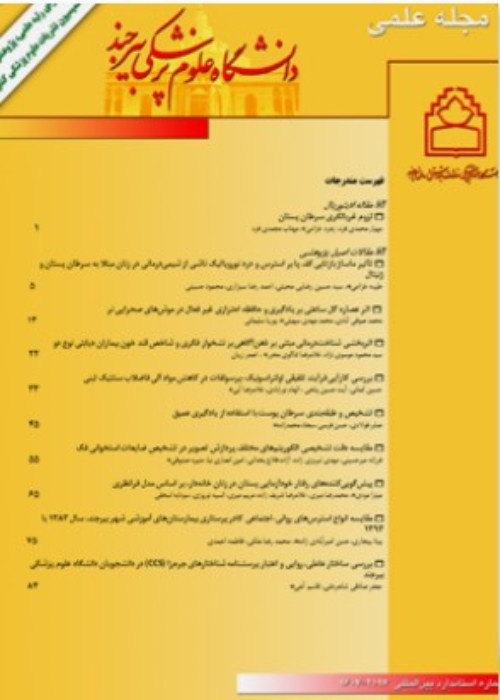Comparison of microleakage between flowable nanocomposite, flowable Composite and Conventional sealant in fissure sealant therapy of the permanent teeth: an in- vitro study
Author(s):
Abstract:
Background And Aim
Novel dental materials including nanocomposites have been introduced in recent years. It is claimed that they have superior properties such as high esthetic., low wear, increased filler content resulting in better mechanical properties, and releasing ions i.e. fluoride and amorphous calcium phosphate that are important for enamel remineralization. Considering these features, if they have retention and microleakage rates comparable with conventional sealants, these materials can be appropriate alternatives to conventional resin sealants in future.The current study aimed at comparing . microleakage of a flowable nanocomposite, a flowable composite , and a conventional sealant in fissure sealant therapy of the permanent teeth.
Materials And Methods
First of all ,42 extracted sound human maxillary first premolars were collected and were randomly divided into 3 equal groups. Then the teeth were embedded in self-cure acrylic resin. Occlusal fissures of the samples were cleaned using explorer, enameloplasty with ¼ round diamond bur and water/air spray was done. The prepared surfaces were etched using 36% phosphoric acid gel for 15s, rinsed and dried. Bonding agent was placed in the pits and fissures, cured for 10s after thinning with air. In the first, second , and the third group conventional sealant, flowable composite , and flowable nanocomposite were placed, respectively; and light cured for 40s. The samples were thermocycled (1000 cycles between 5-55ºC) and then immersed in 2% basic Fuchsine solution for 24hs. They were then cut bucculingually and microleakage evaluation was done using stereomicroscope. The obtained data was analyzed using Kruskal wallis tests.Results
There was no significant difference in microleakage rate of the study groups. (P>0.05).Conclusion
Considering the condition of the study, it can be concluded that flowable composite and flowable nanocomposite can be used as suitable alternatives to conventional sealants in fissure sealant therapy of the permanent teeth.Keywords:
Language:
Persian
Published:
Birjand University of Medical Sciences, Volume:23 Issue: 4, 2017
Pages:
298 to 306
magiran.com/p1666135
دانلود و مطالعه متن این مقاله با یکی از روشهای زیر امکان پذیر است:
اشتراک شخصی
با عضویت و پرداخت آنلاین حق اشتراک یکساله به مبلغ 1,390,000ريال میتوانید 70 عنوان مطلب دانلود کنید!
اشتراک سازمانی
به کتابخانه دانشگاه یا محل کار خود پیشنهاد کنید تا اشتراک سازمانی این پایگاه را برای دسترسی نامحدود همه کاربران به متن مطالب تهیه نمایند!
توجه!
- حق عضویت دریافتی صرف حمایت از نشریات عضو و نگهداری، تکمیل و توسعه مگیران میشود.
- پرداخت حق اشتراک و دانلود مقالات اجازه بازنشر آن در سایر رسانههای چاپی و دیجیتال را به کاربر نمیدهد.
دسترسی سراسری کاربران دانشگاه پیام نور!
اعضای هیئت علمی و دانشجویان دانشگاه پیام نور در سراسر کشور، در صورت ثبت نام با ایمیل دانشگاهی، تا پایان فروردین ماه 1403 به مقالات سایت دسترسی خواهند داشت!
In order to view content subscription is required
Personal subscription
Subscribe magiran.com for 70 € euros via PayPal and download 70 articles during a year.
Organization subscription
Please contact us to subscribe your university or library for unlimited access!


